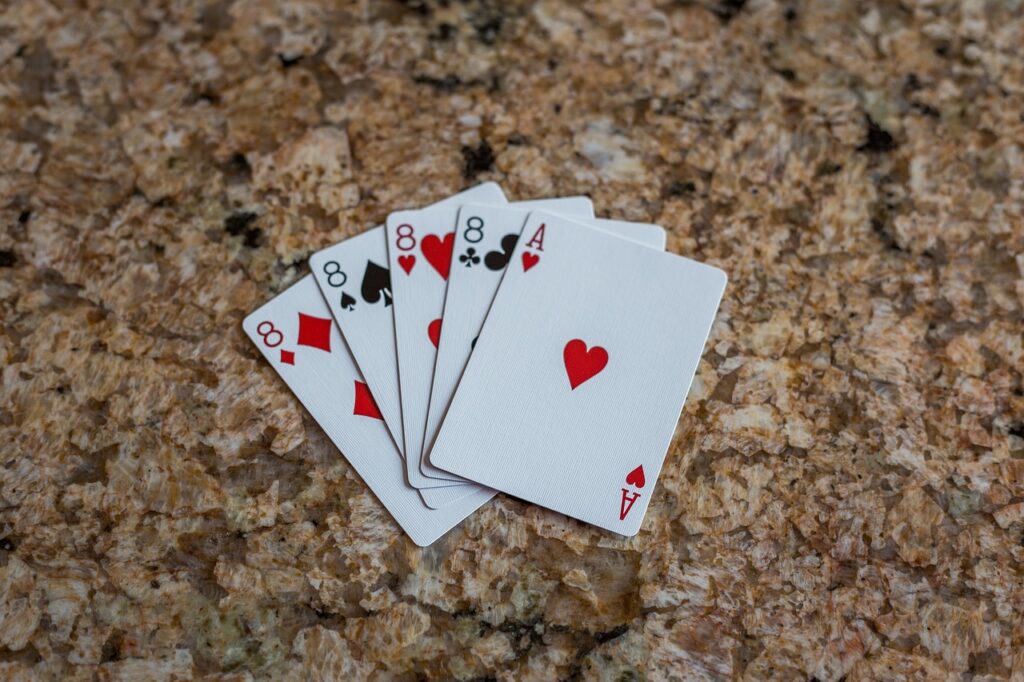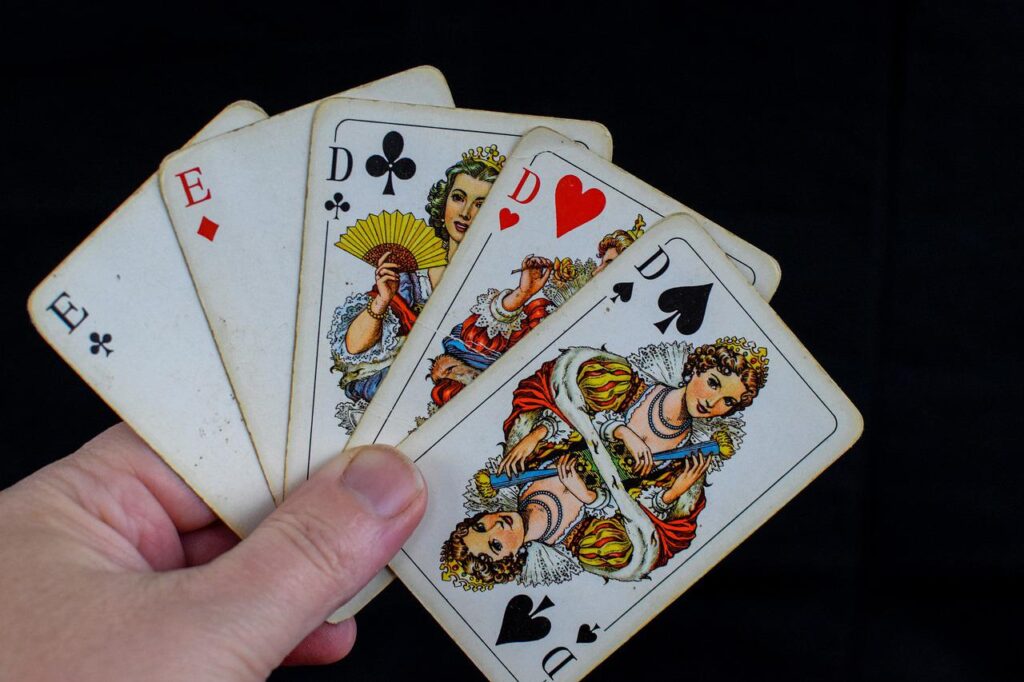Which hand is more valuable, four-of-a-kind or full-house? Well, that depends on which of the two is rarer. Let’s calculate them. If you are still unsure what I am talking about – it is about the 5-card poker game.
In a 5-card hand poker game, a player gets five cards from a well-shuffled deck of cards. Remember: one deck has 52 cards – 13 ranks in each of the four suits. The 13 ranks are 2, 3, 4, 5, 6, 7, 8, 9, 10, J, Q, K, A, and the four suits are diamonds, hearts, aces and clubs. Now, over to calculations.
The probability of a hand equals the number of ways you get a particular pattern (four-of-a-kind and full-house, in our case) divided by the total number of ways you can get five random cards from a deck of 52. If you recall some of the earlier posts, the latter is nothing but the combination, 52C5.
Four of a kind

What is the number of possibilities to get this pattern? One way to approach this is to imagine five boxes. Your task is to fill the first four boxes with of kind (rank). There are 13C1 ways to find rank and 4C4 ways to arrange four suits from the maximum of four. So, the first four boxes can be filled by 13C1 x 4C4 number possibilities. Once the first rank is done in the first four boxes, there are 12 other ranks remaining for the last box. Using the same argument we used before, that becomes 12C1 x 4C1.
The final probability is (13C1 x 4C4 x 12C1 x 4C1) / (52C5) = 624 / 2598960 = 0.00024
Full house
You need three of one kind and two of another to get full-house.

Imagine the five boxes again. This time, we first fill three with 13 kinds, one at a time and four suits, three at a time. 13C1 x 4C3. The remaining two boxes need to be filled with another kind. 12C1 x 4C2. The total options are 13C1 x 4C3 x 12C1 x 4C2 = 3744 / 2598960 =0.00144.
Summary
The four-of-a-kind has a lower chance of occurrence compared to the full-house. The former is, therefore, more valuable.

